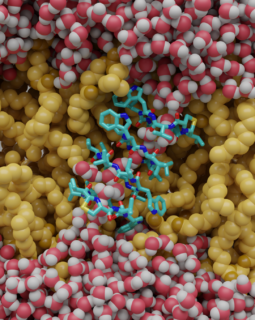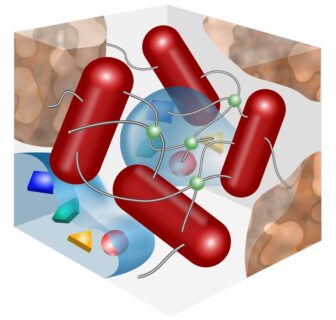News Schambony group
DFG Funds Research on Lugdunin: Collaboration Between FAU Erlangen-Nürnberg and University of Göttingen Explores Selectivity of an Antimicrobial Peptide
How bacteria actively use passive physics to make biofilms
EBM Harmonization Workshop: Early Neural Development
Molecular interactions in Wnt/β-catenin signaling
Influence of substrate stiffness on early neural development
Fighting hunger with cassava
Research
Switching molecules on & off by light to control cellular dynamics
A novel type of contractile ring enables cell division









